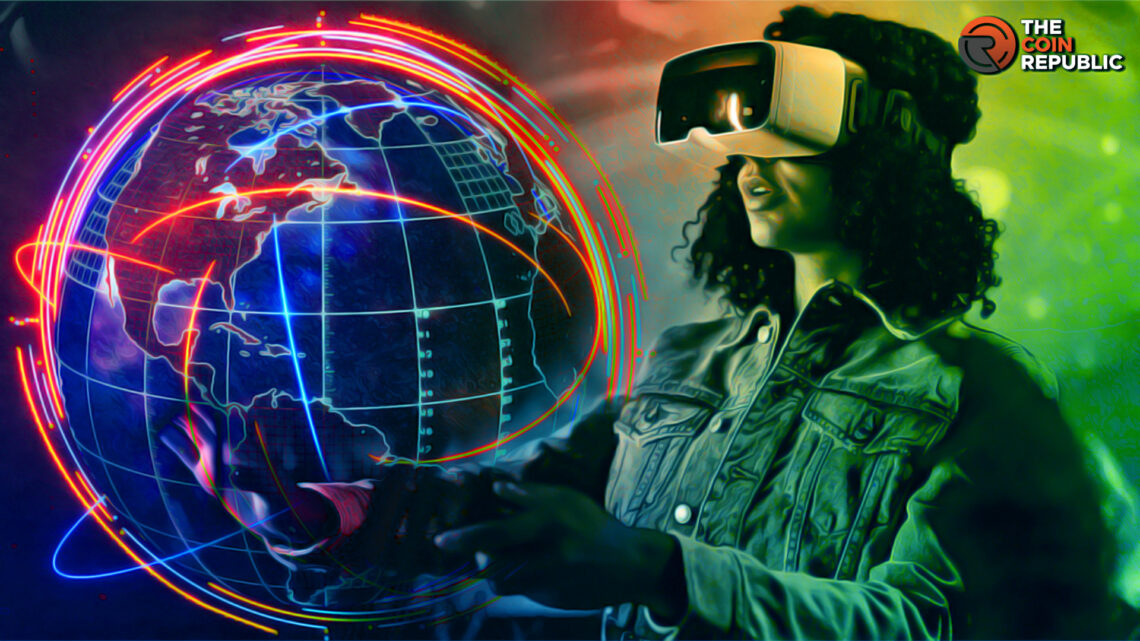- 1 The metaverse will be a universe containing interconnected virtual worlds.
- 2 virtual worlds are likely to enter the mainstream in the next five years.
Metaverse is still a skeptical notion globally. Some believe that it requires advanced technologies in order to reach the point where it can actually be called the metaverse. A new report by the World Geospatial Industry Council, a global trade association in the Netherlands, sheds light on the integration of geospatial capabilities in virtual worlds.
Future of The Metaverse is Global
Geospatial, in simple terms, is a notion explaining data containing geographic elements including human systems, environment, regions, and more. The report dubbed “Bringing Geospatial Context to the Metaverse: Considerations for the Next Steps” suggests four “priorities for the next steps.” Metaverse, the term coined by Neal Stephenson in his 1992 novel Snow Crash, is considered a future multi-trillion dollar opportunity by financial institutions like Goldman Sachs and Citibank.
The study cites a couple of facts supporting the importance of geospatial integration with the metaverse. Technologies including virtual reality (VR), augmented reality (AR), mixed reality (MR), and more are being used in both domains. Furthermore, it mentions that “Research has been conducted on accurately modeling interactions between components that comprise a geospatial product or processes, in the field of spatial digital twins (SDTs).”
Additionally, it presents some “strategic capabilities to develop the geospatial ecosystem in the metaverse.” The section includes multiple suggestions like the presence of both domains on multiple devices, large-scale interoperability, user control over content, and more.
Priorities to Consider
The metaverse promises to be a revolutionary technology. The report notes, “Positive value proposition of the metaverse will require a careful understanding of the participant’s perception of the change and their aspirations.” Moreover, the adoption of head-mounted devices (HMDs) will vary from region to region, taking into account cultural norms and affordability.
The wide-spreading nature of the metaverse requires an understanding of its wide-ranging stakeholders. Meanwhile, end-user communities would come in handy in identifying avenues of collaboration appearing within the radar. Further, it identifies four stakeholder groups in the metaverse for this purpose.
Additionally, the investigation of complexities persisting in technological interoperability and data governance is addressed as the third priority in the report. Given that the metaverse is defined by interoperability, it is vital to fill any persisting gaps in there.
It finally talks about the creation of economic opportunities in geospatial and metaverse landscapes. The paper writes, “A unique value proposition, even if simple, must demonstrate the value of bringing geospatial context to the metaverse.”
Management consulting company, Gartner, mentions the metaverse in its Hype Cycle for Emerging Trends, a list representing maturity, adoption, and social application of specific technologies. Moreover, many are positive that virtual worlds will enter the mainstream in the next five years while also attracting businesses progressively.
Anurag is working as a fundamental writer for The Coin Republic since 2021. He likes to exercise his curious muscles and research deep into a topic. Though he covers various aspects of the crypto industry, he is quite passionate about the Web3, NFTs, Gaming, and Metaverse, and envisions them as the future of the (digital) economy. A reader & writer at heart, he calls himself an “average guitar player” and a fun footballer.


 Home
Home News
News







